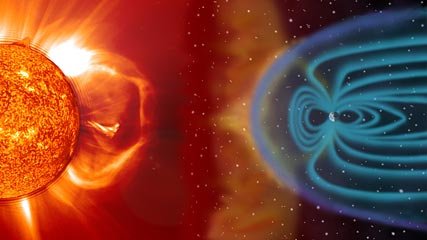On July 23, 2012, the sun unleashed two massive clouds of plasma that barely missed a catastrophic encounter with the Earth’s atmosphere. These plasma clouds, known as coronal mass ejections (CMEs), comprised a solar storm thought to be the most powerful in at least 150 years.
“If it had hit, we would still be picking up the pieces,” physicist Daniel Baker of the University of Colorado tells NASA.
Fortunately, the blast site of the CMEs was not directed at Earth. Had this event occurred a week earlier when the point of eruption was Earth-facing, a potentially disastrous outcome would have unfolded.
“I have come away from our recent studies more convinced than ever that Earth and its inhabitants were incredibly fortunate that the 2012 eruption happened when it did,” Baker tells NASA. “If the eruption had occurred only one week earlier, Earth would have been in the line of fire.”
(Read the rest of the story here…)
